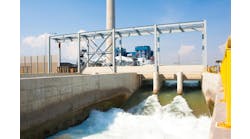A colleague of mine, Nick Spates of Modular Process Control, made a profound comment about industry. “Companies approach energy management with one of two basic strategies,” says Nick. “One is that of the hunter, and the other, the farmer.” I thought about that comment a lot over the past year and promised to write a column about it.
Imagine living on the frontier before the advent of supermarkets, convenience stores, and restaurants. Frontiersmen had to be self-sufficient in providing not only daily sustenance, but (if times were good) some surplus commodities for the market. The same opportunities await chemical manufacturers — hunting and farming wealth in their own facilities — through proactive management of energy resources.
The farmer stakes out a fixed territory and produces value by systematically sowing, tending and harvesting crops. The farmer’s discipline of daily chores, patiently applied year after year, allows him to reap wealth from his acreage. Aside from some weather-related risk, the farmer has a predictable yield. He may produce only one or two crop varieties per season, but the volume is enough to feed his family with some left to sell for income.
The hunter roams freely about the land in search of game. His task is opportunistic — relying on chance and skill to secure a small volume of meat and pelts. The hunter works hard for his bounty, but the goods return a much higher price per unit of mass than do the farmer’s. The hunter’s effort returns value quickly, but he shoulders a sizeable risk of failure for his time. It’s not unusual for a team of hunters to pool their talents when stalking game.
So we would expect the frontier head-of-household to put some effort into both hunting and farming, balancing the two tasks to reflect the risks and rewards inherent in each activity. A clever individual could ensure the harvest of staple grains for his family with a surplus to generate cash. At the same time, hunting would bring meat for the dinner table as well as pelts for extra income. Now, let’s apply this thinking to industrial energy management.
Energy is to the factory as fertile land is to the farmer. Through distribution of electricity, steam, heat-transfer fluids and compressed air, energy can potentially fertilize every square foot of space. That energy can either be harnessed to make products, or it can dissipate through waste. In either case, the plant pays for that energy.
The farmer, in today’s factory, harvests value from existing plant assets. He ensures that leaks and losses from steam, air, water and other distribution systems are minimized. Operating benchmarks indicate the optimal level of energy consumption per unit of production, while periodic data snapshots indicate when systems stray from those benchmarks. Like the farmer who methodically plows each row of land, the industrial energy manager monitors each layer of energy flow data. He develops a protocol for reacting to anomalies in the data.
The industrial energy farmer needs to know the cost-benefit of taking remedial action. Benchmarks and operating data are his ledger — they’re crucial for establishing guidelines for taking action. They’re also evidence of the value he has saved. Documentation of energy flows demonstrates the total value saved (and the revenue it generates) as well as the value of avoided waste.
The modern industrial hunter is the plant engineer who seeks singular pieces of technology, strategically chosen to improve operating effectiveness. Through consultation and research, that engineer scopes out new and improved applications that pay for themselves through the savings and extra productivity that they provide. He lobbies his corporate directors in the capital budgeting process.
There’s an elevated risk-reward aspect with strategic technologies, but the successful engineer is skilled at both technical analysis and in presenting his proposal to corporate officers, to explain “what’s in it for them.” It’s not unusual for the engineer to pool efforts with others who can help to secure his game. The engineer’s allies are the technical assistance teams located at universities, professional societies, utilities and consulting firms.
Industrial plant managers today are on the frontier of a challenging future. We know that frontiersmen survived by diversifying their modes of livelihood and by teaming their skills and efforts. While some manufacturers will falter, others will thrive, especially if they harvest their resources wisely. Energy is the fertilizer of industry. Information is the ploughshare. Truly competitive manufacturers will enlist both farmers and hunters to reap value from their production facilities.
